The Polestar 2 is the closest rival to the popular Tesla Model 3 to date.
The luxury liftback was the fourth best-selling electric vehicle in Australia last year, though it was still outsold by the Tesla sedan by more than seven times.
It’s also the first model to debut in Australia from the EV brand spun off from Swedish luxury car brand Volvo Cars and Chinese conglomerate Geely, using underpinnings from the Volvo XC40 and C40 Recharge SUVs.
But, with a major 2024 Polestar 2 update coming within a few months bringing a host of new upgrades, including available rear-wheel drive; longer driving range; faster charging; power increases; more standard equipment; and a fresher look, is the current model still worth a look if you can’t wait
Here, we tested the mid-variant Polestar 2 Long Range Single Motor, which is priced from $68,400 before on-road costs with the Pilot lite Pack ($3400) and Plus Pack ($6000) fitted.
It competes against the Tesla Model 3, Model Y, Kia EV6, Niro EV, Volvo XC40 Recharge and C40 Recharge electric cars.
zecar rating
Good points
- High-tech Android Automotive software
- Good efficiency, great one-pedal driving system
- Functional boot and frunk features
Could be better
- Some options should be standard
- Impractical interior, firm and noisy ride
- Slower real-world charging time
EDITOR’S NOTE: The test vehicle was provided by Polestar Australia for a seven-day independent evaluation.
Polestar 2 Design

The Chinese-made, Swedish designed Polestar 2 balances a sporty and premium design well, without being an over-the-top electric car.
Even though it’s 88mm shorter than the Tesla Model 3 in length, the sloping liftback roof shape makes it look deceptively long. And, the 151mm ground clearance (11mm more than the Model 3) with some plastic cladding appeals to SUV buyers.
Our tester’s Jupiter exterior colour option ($1500) is a classy light bronze and rose gold hue, which shows off the side body creases well under the sun and can appear silver-ish when there’s less light.
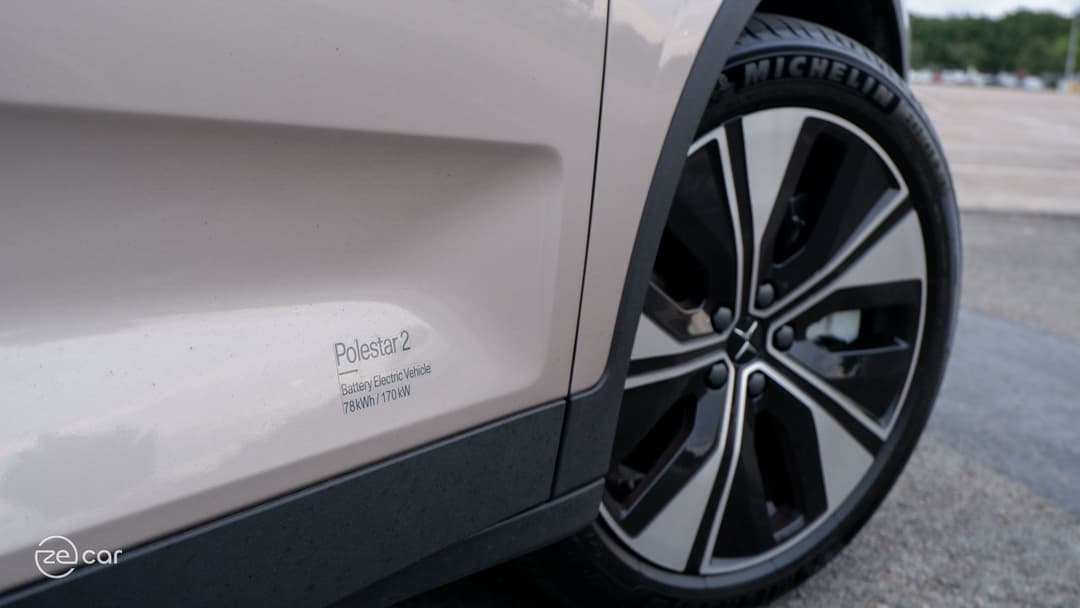

The Sino-Swedish automaker also incorporates some unique design elements, including body colour-matching matte Polestar logos, frameless wing mirrors, and a coat hanger-shaped thin LED rear light bar.
The latter is always on even during the day, unlike the Kia EV6, plays a nifty sequential animation when unlocking/locking, and has much more prominent indicators than the popular Tesla Model 3 (even with the larger bulbs from a running update in 2022).
The front vertical slat black grille is closed-off and hides the radar and camera safety assistance systems – as opposed to the upcoming 2024 Polestar 2 facelift which has a visible ‘SmartZone’ module in the centre of the new body-coloured face.


It still shares design remnants with its Volvo counterpart, though, including the signature Thor’s hammer LED daytime running lights, standard 19-inch aerodynamic alloys reminiscent of the single-motor XC40 and C40 Recharge SUVs, and it borrows the same steering wheel inside.
With the Plus Pack fitted ($6000), it brings animal-free WeaveTech seats in either slate or charcoal with black ash wood trim. Our tester had the former and looks more like a pale blue colour in real life, plus the soft white ambient lighting hues and panoramic glass roof included in this optional pack help lift the monochromatic interior.
The Polestar 2’s simple interior emphasises a sporty, closed-in feeling with a prominent centre console divider, sloping glass and smaller wing mirrors.
Overall material quality is good for the price with grey fabrics across the dashboard and door cards befitting for its Nordic roots, shimmering satin chrome accents, and clicky air vent and volume dials.

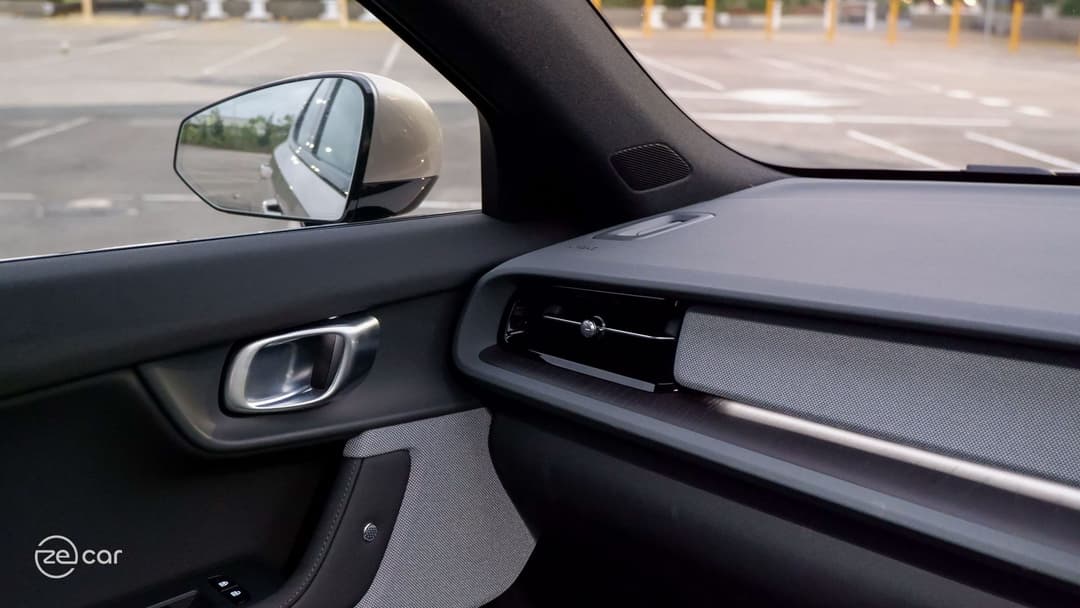
Unfortunately, the glossy black surfaces on the centre console and steering wheel attract dust and fingerprints, and the centre row of defroster, audio play/pause, and hazard light buttons are touch sensitive; it’s hard to know whether they’ve been pressed due to the faint haptic feedback.
The fabrics and plastics used in the animal-free interior have a rougher texture, which is prone to showing scuff marks. Our tester had marks on the plastics of the glove box and centre console’s side and weren't easy to rub off.
Polestar 2 Practicality
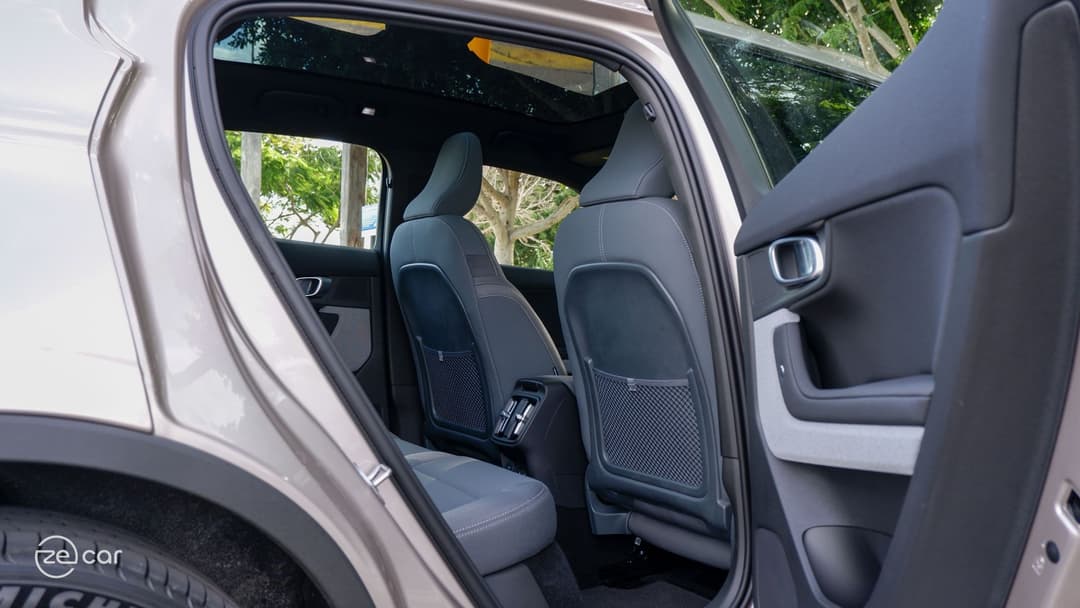
The Polestar 2 electric car offers a 405-litre boot volume or 1095-litres with the 60/40 split rear seats folded.
Even though it’s 156-litres less than its Tesla Model 3 rival, the rear is more accessible thanks to the hatchback-style electric tailgate, which comes as standard with a hands-free open/close kick sensor (that actually works).
But, the sloping liftback body style limits the usable height space and struggles to hold two extra large suitcases side-by-side.
The load space is home to practical touches, including a net, strap, two bag hooks and luggage hooks. Under the floor is a deep 41-litre well, which can store the included trickle charging cable with multiple bags, or even a carry-on sized suitcase.
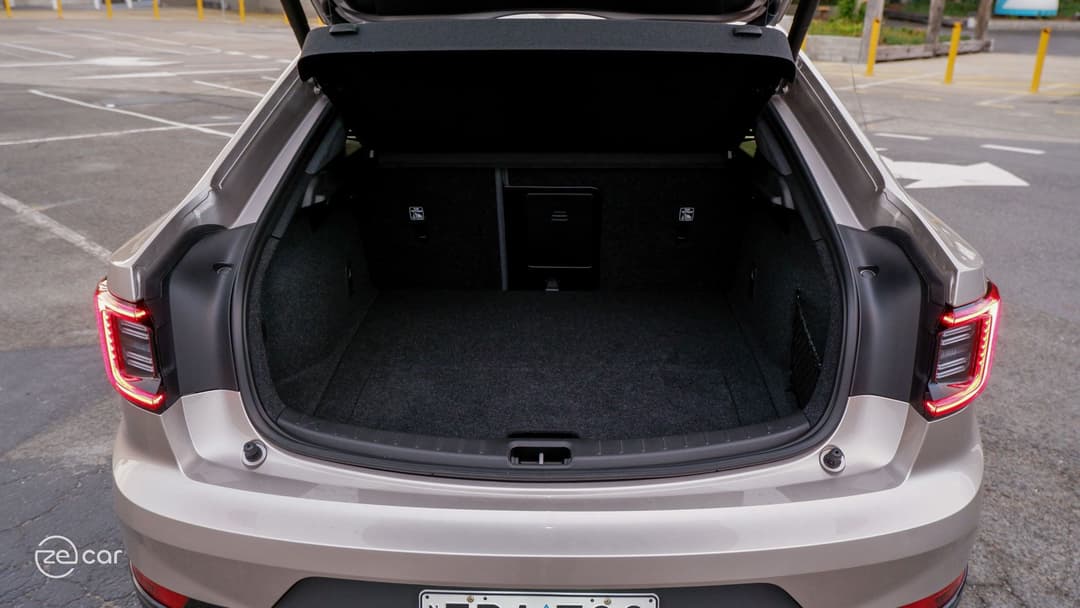

The Plus Pack adds a pop-up ‘lid in lid’ feature which divides the cargo area to prevent smaller items from moving around, includes two narrower bag hooks and a large strap, which came in handy to secure my backpack.
Under the bonnet, the electric Polestar 2 liftback features an impressive 41-litre frunk – despite being based on Volvo’s internal combustion engine Compact Modular Architecture (CMA). The front storage space is carpeted with a boomerang-shaped slot at the top for the tyre repair kit.
However, the adapted platform and sporty cabin design theme shows its weaknesses in rear row practicality.
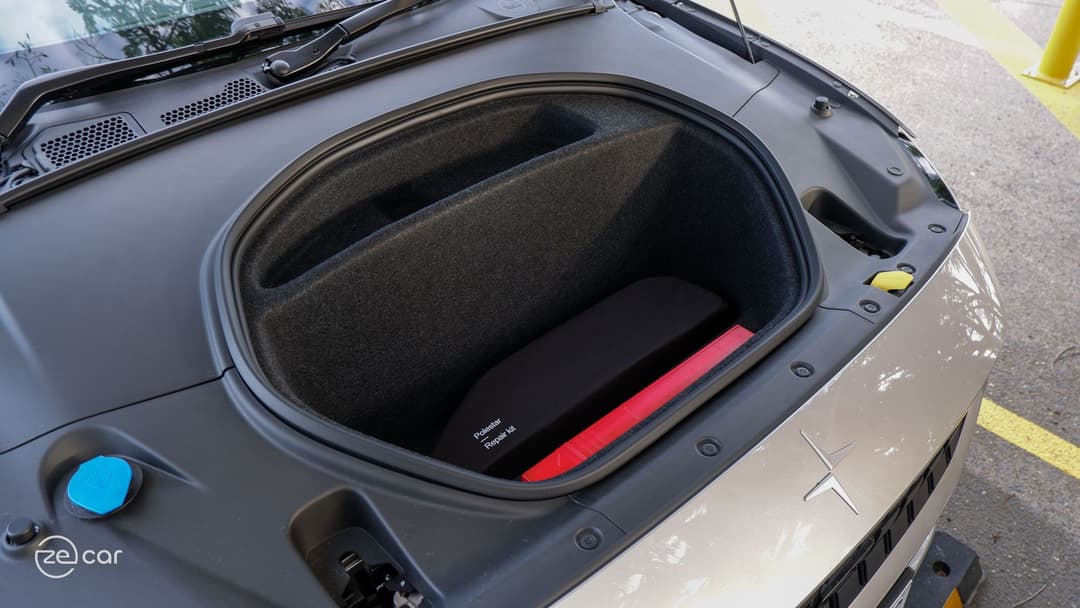
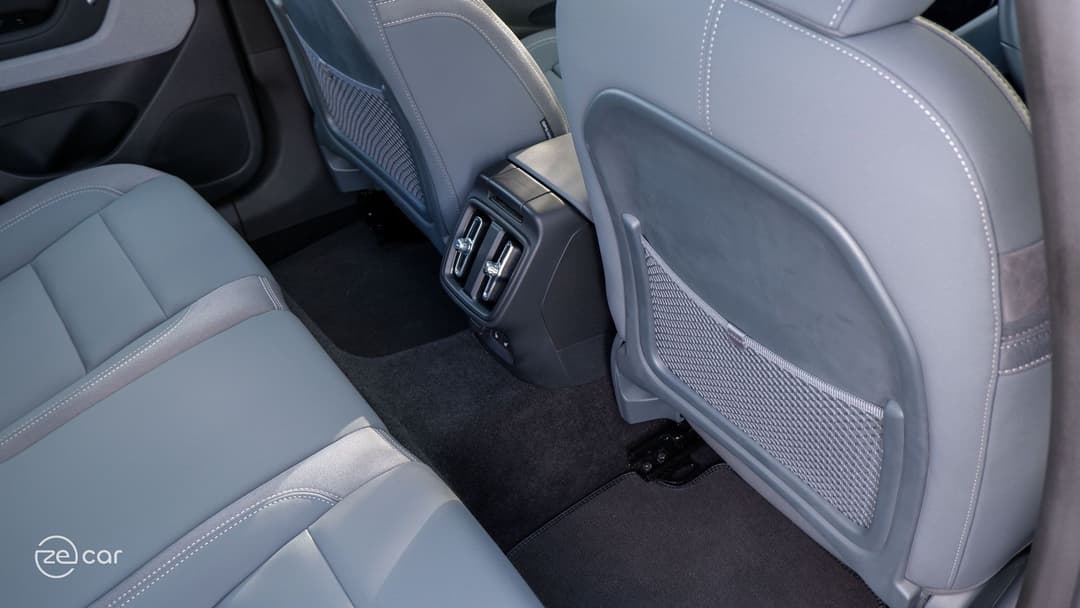
Ingress and egress is difficult due to the protruding wheel arch; the lower liftback roofline and optional panoramic glass roof (with the Plus Pack) limits headroom, which is particularly tight for taller passengers; and there’s a tall hump in the centre floor as a remnant of the combustion engine architecture, which constricts floor space.
Any passenger sitting on the middle seat will need to spread their feet on each side and into the foot space of adjacent passengers.
Fortunately, rear row legroom is decent and feet can slightly slide underneath the front seats, with amenities such as sizable rear air vents; two USB-C charging ports; a fold-down centre armrest; rear door lock buttons; one-touch up/down windows; and three-stage heating on the rear outer seats when the Plus Pack is optioned.


The optional panoramic glass roof looks impressive and rejects ultraviolet light well (a sunshade isn't included) with a special Polestar logo always projecting to the top, though sadly the rear windows can only go down by about three-quarters.
At the front, the prominent centre console rises up to the large touchscreen and divides the driver and front passenger.
Critically, it only provides one always-available cup holder. There’s a second one under the centre armrest – but you can’t use it if you want to store anything in the cubby or use the armrest while driving.
Exacerbating this, the armrest is quite set back; driver's can push it forward, but then it blocks the only visible cup holder.
The narrow and shallow door pockets can only fit smaller bottles and there’s small compartments on each side of the rising centre console which can only hold a wallet or purse. Fortunately, the glove box is a good size with a dedicated slot to store the owner's manual and even a pop-out bag hook, as found in its Volvo XC40 and C40 siblings.


Furthermore, the WeaveTech seats as part of the optional Plus Pack across the Polestar 2 line-up are comfortable – yet tends to absorb heat under the Australian sun. After a few hours of non-stop driving, I noticed the seats felt a little warm since it held onto my body heat.
We’d imagine the standard textile seats might be better, but you can’t have the niceties of Plus Pack with it. Otherwise, it does seem opting for the ventilated, lighter-coloured Nappa leather seats might be wise – although it is a pricey $6000 option.
Another note is that the front centre air vents are placed up on the dashboard, don't have much lateral adjustment, and can’t be individually turned off unlike the other vents to, for example, improve EV driving range.
Polestar 2 Technology
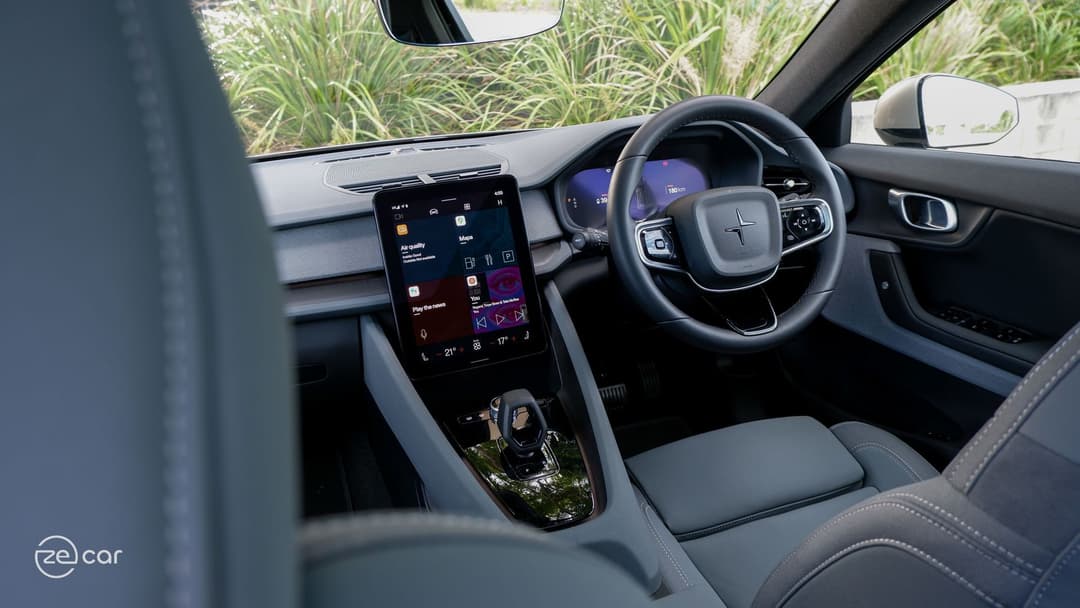
The Polestar 2 EV features an 11.15-inch vertical-oriented touchscreen and a 12.3-inch driver instrument cluster display, and was the first vehicle to adopt Google’s built-in Android Automotive software.
The headline act is the built-in Google Maps navigation, which integrates with the electric car battery state-of-charge to estimate the remaining percentage on arrival at a destination and on return.
It cleverly plans EV fast charging stops with major providers in seconds, shows the availability of stations live, and how long you need to stay there to have enough driving range for the next stop.
The integrated system takes the guesswork out of longer trips and is a crucial feature to offset electric ‘range anxiety’, even though third-party app A Better Routeplanner already does this and is available to download on Android Automotive.

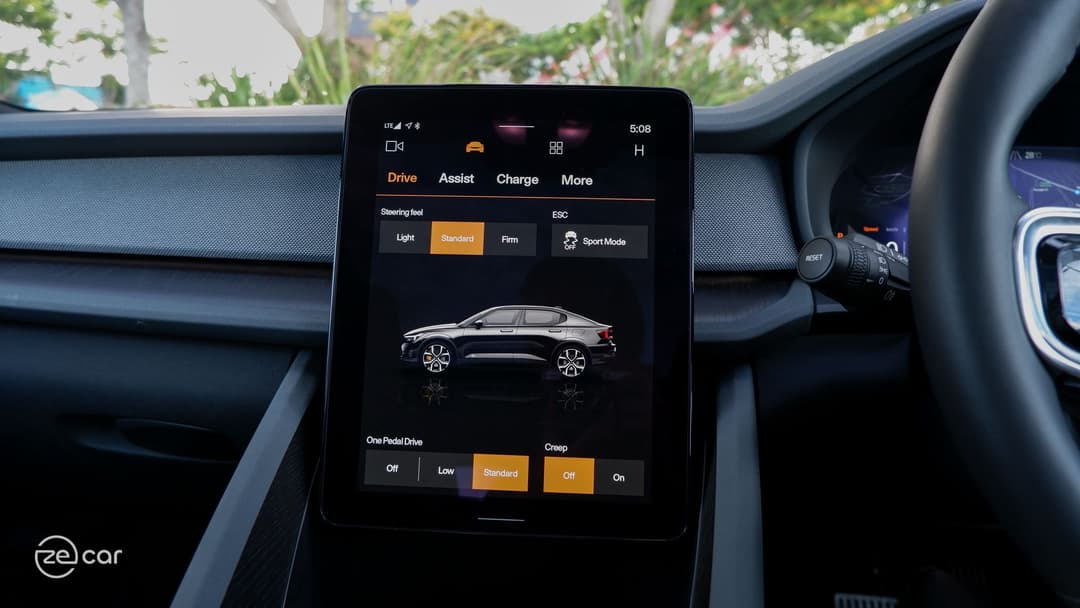
Other features include Google Assistant voice control and the Google Play Store to install apps such as Spotify, Pocket Casts, and the Polestar Space Warp arcade game.
Although the YouTube app still isn’t available since its announcement in early 2022, the Vivaldi web browser allows it to stream the video platform and access almost any website (including zecar’s handy EV database, comparison and cost-of-ownership tools).
Also missing is the crowdsourced-based Waze navigation app, which will strangely debut only on Android Automotive powered Renault vehicles this year, and Google Podcasts.
It’s worth noting that Polestar Australia includes a three-year connectivity plan to use the e-SIM internet services, instead of Volvo which bundles it for four-years.
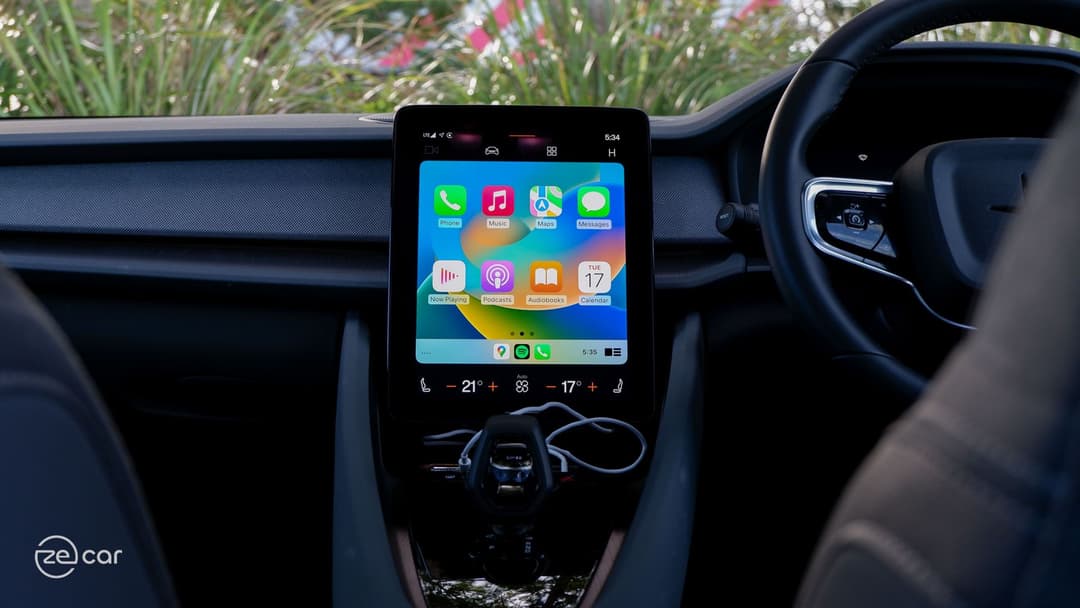

Polestar’s modern black-orange themed user interface skin has large fonts and buttons, customisable home screen tiles, and persistent row of shortcuts at the top. The climate control, front seat heaters, and heated steering wheel (latter is part of the Plus Pack) must be operated via the touchscreen – but it’s not too fiddly due to prominent touch targets and can be adjusted alternatively via the Assistant.
Unfortunately, there are some pages in the software that hides the bottom climate control bar. The air vent directions are adjusted physically, unlike the Tesla Model 3. We noticed the system can take some time to initially boot up and connect to the internet on startup, and sometimes ‘soft resets’ itself.
We also commend the inclusion of fullscreen wired Apple CarPlay for iPhone users, even though Android Automotive doesn’t require a connected smartphone (except for calls and receiving notifications) – but it’s best to sign in with a Google Account. Phone-based Android Auto isn’t available.

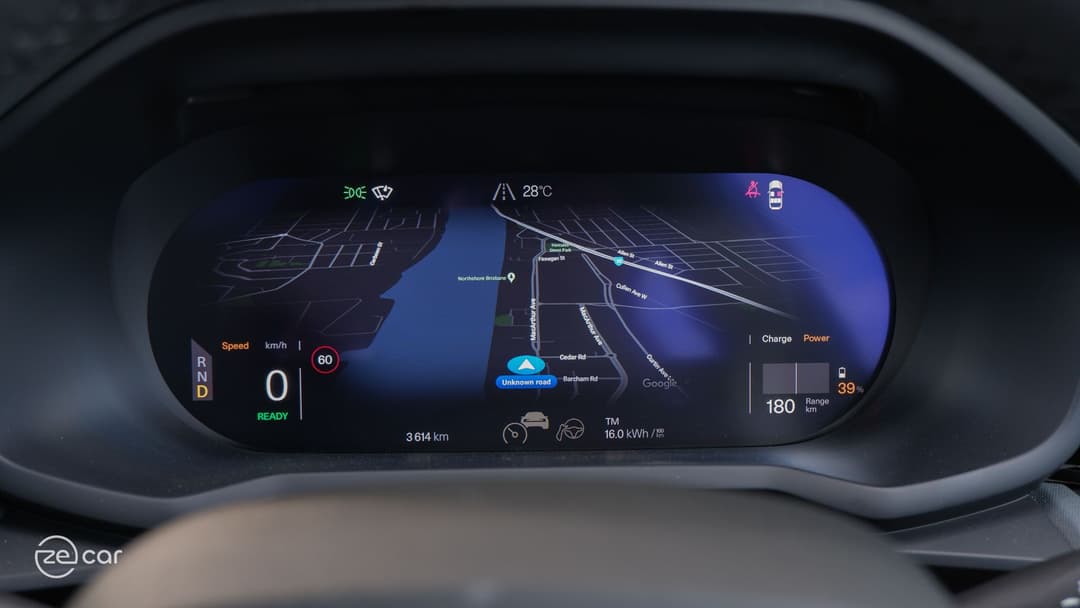
The system can receive over-the-air (OTA) software updates, which has quashed bugs, improved safety assistance systems and introduced new features based on its update record. We installed version P2.4 overnight without any troubles and only drained one per cent of the battery. It suggested it’d take 1.5 hours and you can’t drive the vehicle in the process.
A key advantage of the Polestar 2 compared to its popular rival is the inclusion of a 12.3-inch instrument screen in front of the driver.
It adopts a simplistic design with only two layouts – prominent number-only readouts or nifty full-screen Google Maps.
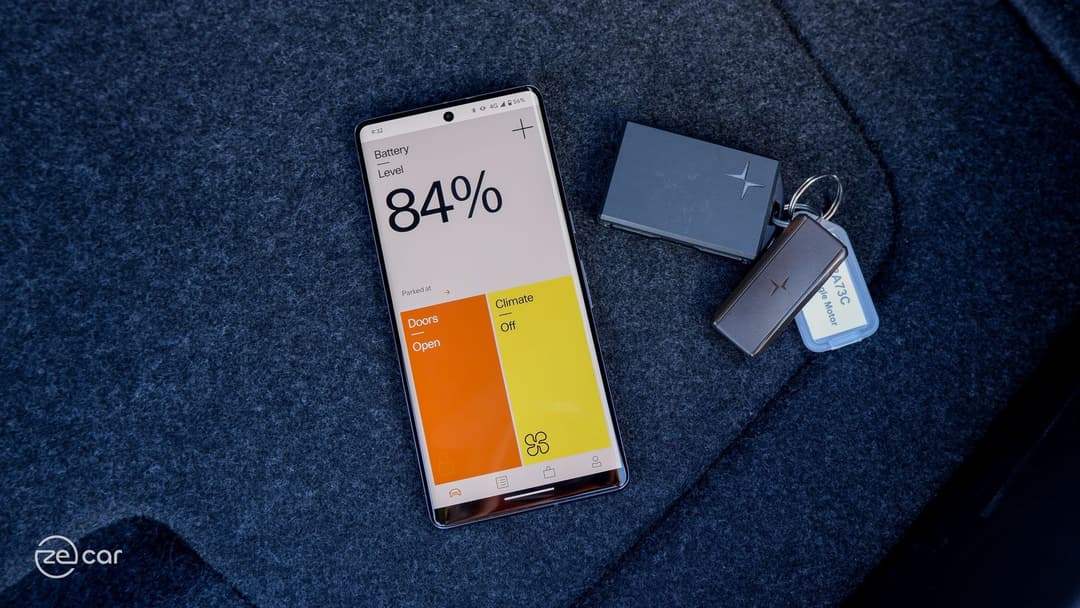
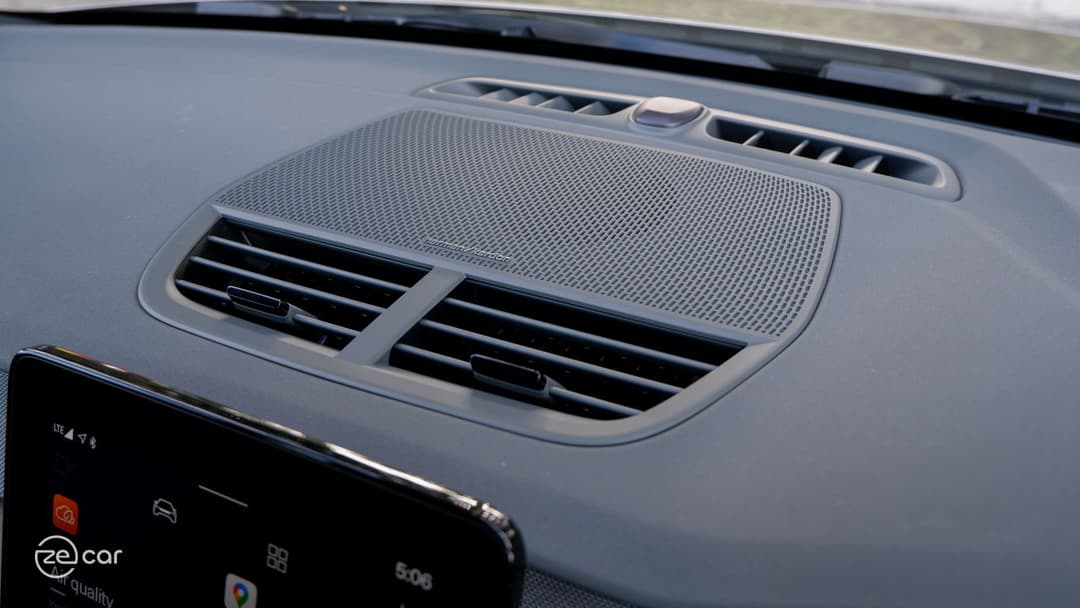
The luxury marque also offers a smartphone app to remotely precondition or pre-purify the interior, unlock/lock doors, check the battery and charging status, and parking location. The phone can even act as a digital key and replace the included (plasticky) key fob and waterproof key entirely, although it’s still a beta feature.
The app is minimalistic and sends commands quickly, but occasionally couldn’t load the vehicle and lacks granular controls, such as setting a climate control temperature (it’s automatic), sending a navigation direction, or triggering the alarm.
The Polestar 2 is home to four USB-C charging ports, and the Plus Pack adds a 15-watt Qi wireless phone charging pad at the front and an upgraded 13-speaker Harman Kardon audio setup, which has impressive and immersive sound quality, clear mids and deep bass.
Polestar 2 Safety Assist
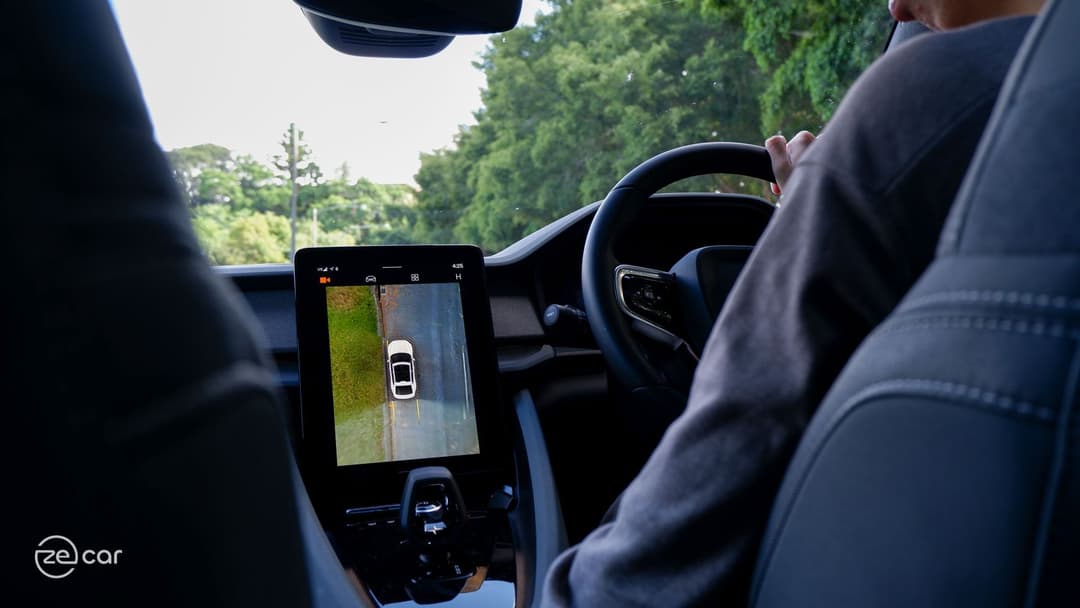
The Polestar 2 electric car comes standard with front auto emergency braking (AEB) with vehicle/cyclist/pedestrian detection; lane keep assist; run-off road mitigation; oncoming lane mitigation; post-impact braking; traffic sign recognition; a reversing camera; and front- and rear parking sensors.
The optional Pilot lite pack ($3400) adds reverse AEB; blind-spot assist; rear cross-traffic assist; Pilot Assist adaptive cruise control; a 360-degree view camera; side parking sensors; front LED fog lights with cornering function; and auto dimming wing mirrors.
These active safety assistance systems should be standard at its price – especially for any modern-day premium manufacturer.
Fortunately, this packaging issue will be mostly addressed in the upcoming 2024 Polestar 2 update.

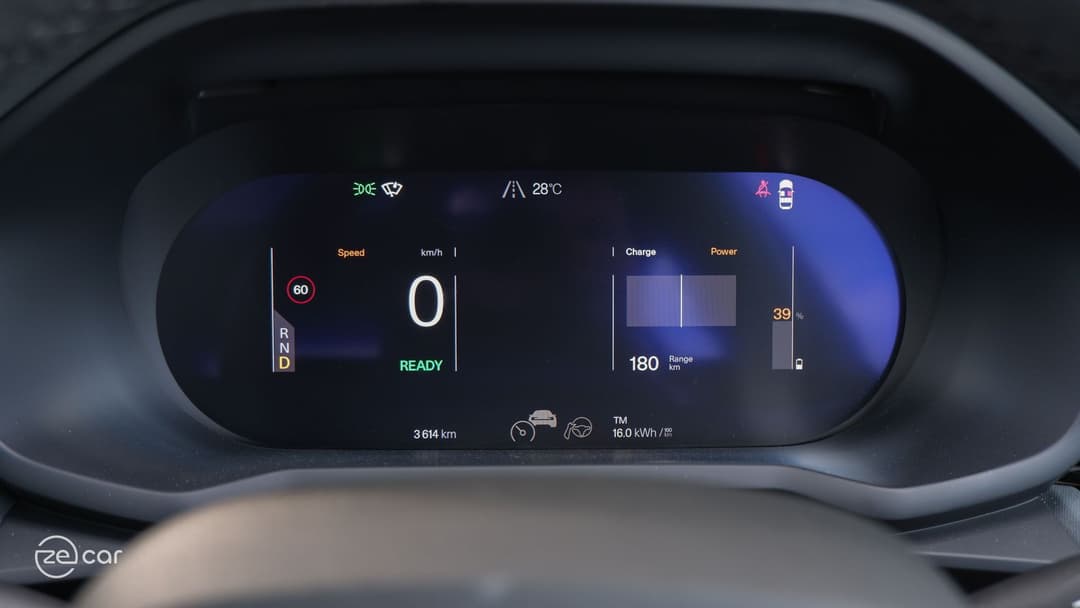
When fitted, the lane centring assist performed well and kept working at a specific bend where previous cars we’ve tested fail to detect and deactivate, although it sometimes sits towards the line when on a turn.
The camera and radar-based adaptive cruise control works mostly well, but did ‘phantom brake’ occasionally by slowing the car down (possibly due to an adjacent large truck or shadow), sometimes came to a stop too early behind a vehicle (before creeping forward to correct itself), and seems to have a 3km/h leeway (with no setting to adjust the tolerance).
Furthermore, the 360-degree camera system is decent quality and handily shown on the large portrait display. Though, it can only show one view at the same time, so drivers need to touch the screen to switch camera angles, and it cuts-out when travelling faster than 15km/h.
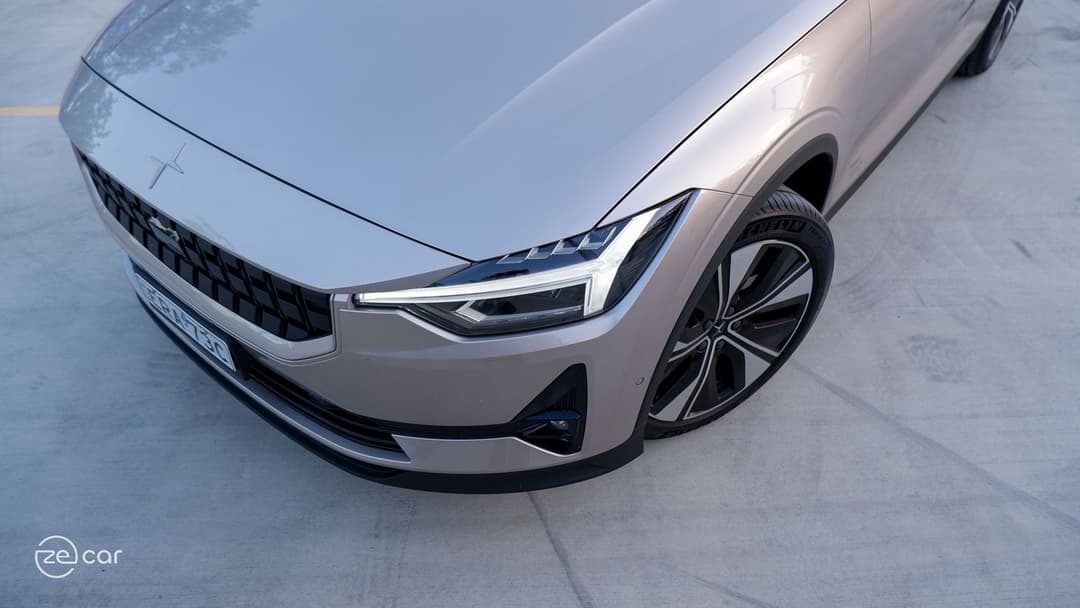

Safety assist and parking sensor chimes are quite gentle, though the blind spot assist doesn’t provide an audible warning when indicating (only flashes the light on the wing mirror). The road sign recognition is also accurate and warning chimes are off by default.
The standard LED headlights are decent and the auto high beam function works well. Unfortunately, due to the semiconductor shortage, the safety assist pack still doesn’t come with adaptive LED matrix units and only bundles LED cornering fog lights.
Polestar 2 Range and Charging
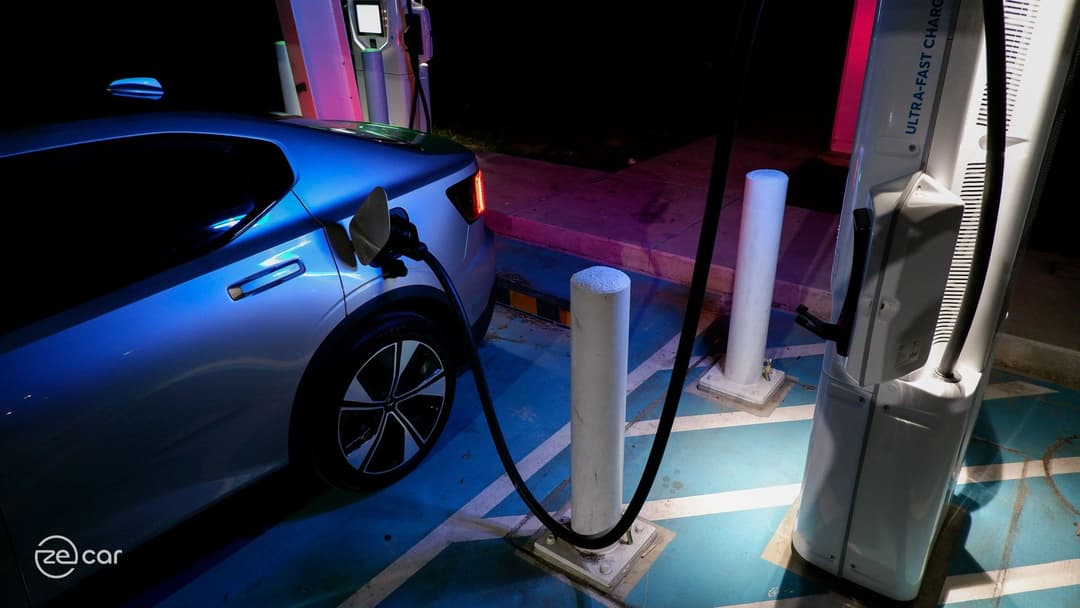
The mid-pack Polestar 2 Long Range Single Motor on test has a 75kWh usable nickel manganese cobalt (NMC) battery capable of charging at up to 11kW AC and 150kW DC speeds using a standard 400-volt class architecture.
In our real-world charging test, it went from 15 to 80 per cent in 36 minutes on a 350kW DC ultra rapid station – in line with Polestar’s claim.
It took 51 minutes to recharge from 15 to 90 per cent – the maximum suggested threshold to maintain a healthy battery on the Polestar 2.


Despite using battery preconditioning and briefly achieving the 150kW fast charging peak at the start, it still doesn’t provide an impressive overall charging time. This is because of Polestar’s slower charging curve algorithm – continuously throttling down the speed as the state-of-charge goes up, instead of staggered steps.
For reference, both the MG ZS EV and Kia Niro EV we tested charged in about the same time – but were limited to 67kW and 82kW peaks respectively.

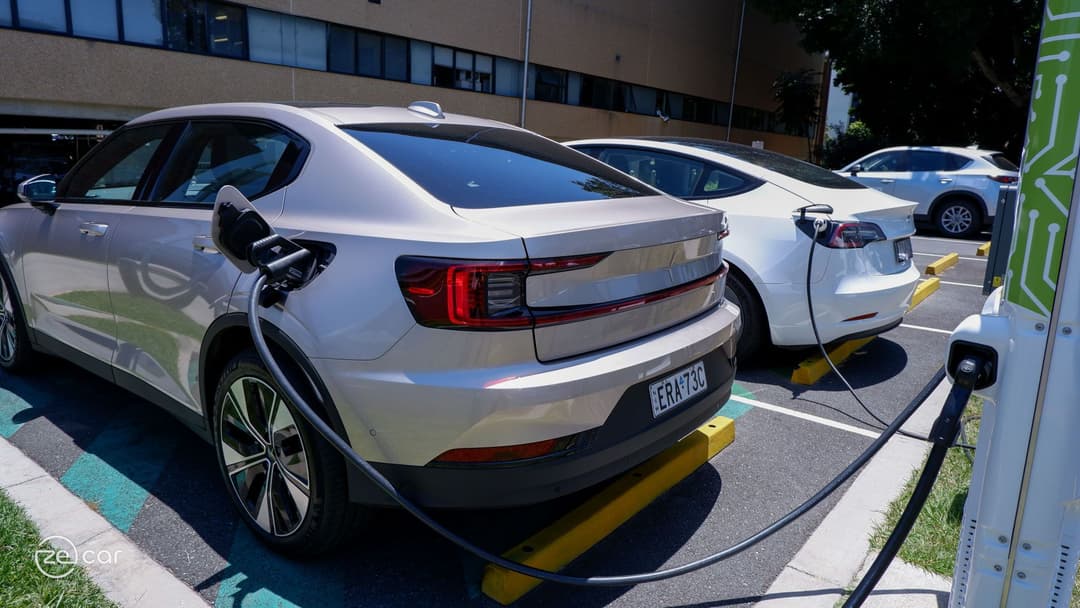
The Polestar 2 electric car uses the common Type 2/CCS2 charging plug standard at the rear-left quarter, which is a good accessible location for public EV chargers – especially for Tesla Supercharging stations which are starting to open up to all electric models, albeit at an expensive price.
Also commendable is the inclusion of both a standard 2.3kW AC three-pin trickle charger (Mode 2) and Type 2 to Type 2 11kW AC cable (Mode 3) to use at public EV charging stations, which is usually a separate accessory purchase. Both cables aren't included with Tesla EVs at all.
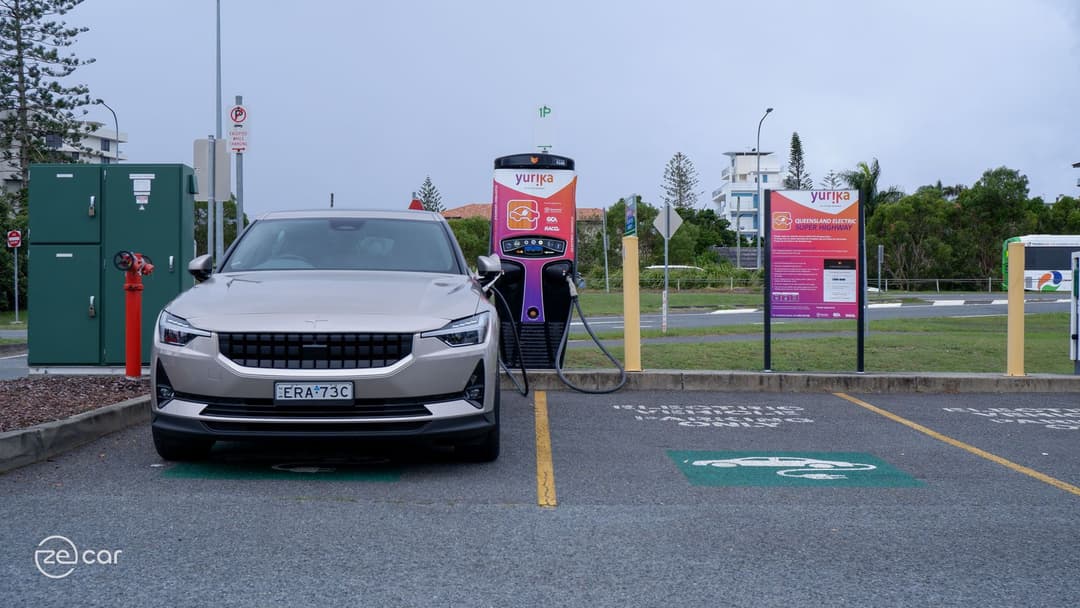
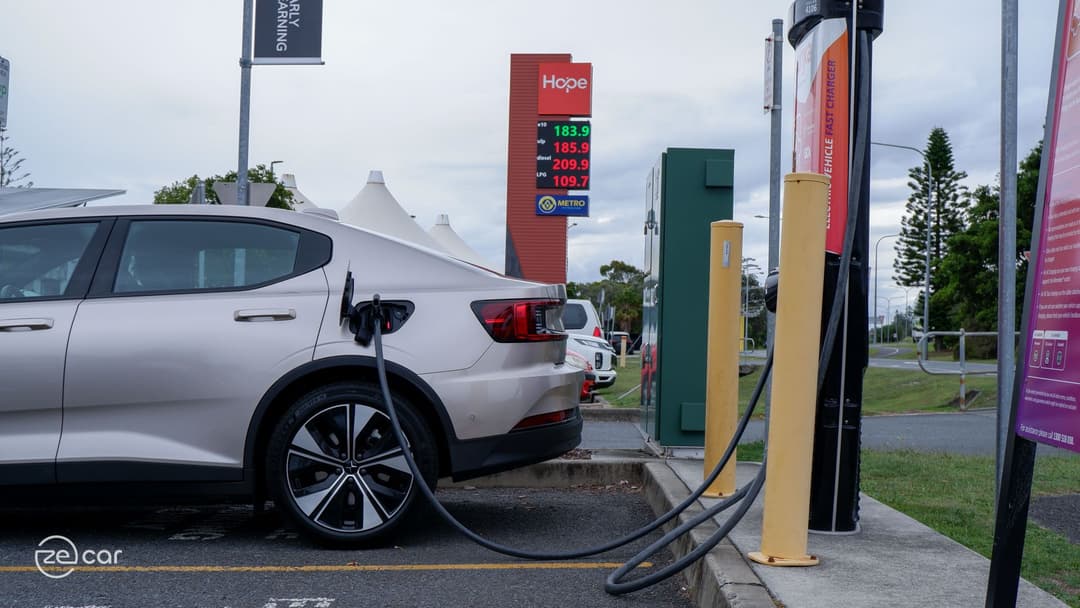
The Sino-Swedish carmaker claims this mid-spec Long Range Single Motor has up to 540km driving range on the WLTP testing cycle and energy efficiency between 171 to 186Wh/km.
In our week of driving a mix of city and highway conditions, we only achieved 452km of theoretical real-world range from 166Wh/km energy efficiency, according to the trip computer.
The Polestar 2 Long Range Single Motor has good efficiency that beats the claim and still offers decent range on par with the similarly-priced Hyundai Ioniq 5 AWD (pre-update) and Kia Niro EV we’ve tested.
The optional Plus Pack also brings a heat pump, but it’s not as essential since it saves more energy in extreme low temperature climates which is seldom in Australia.
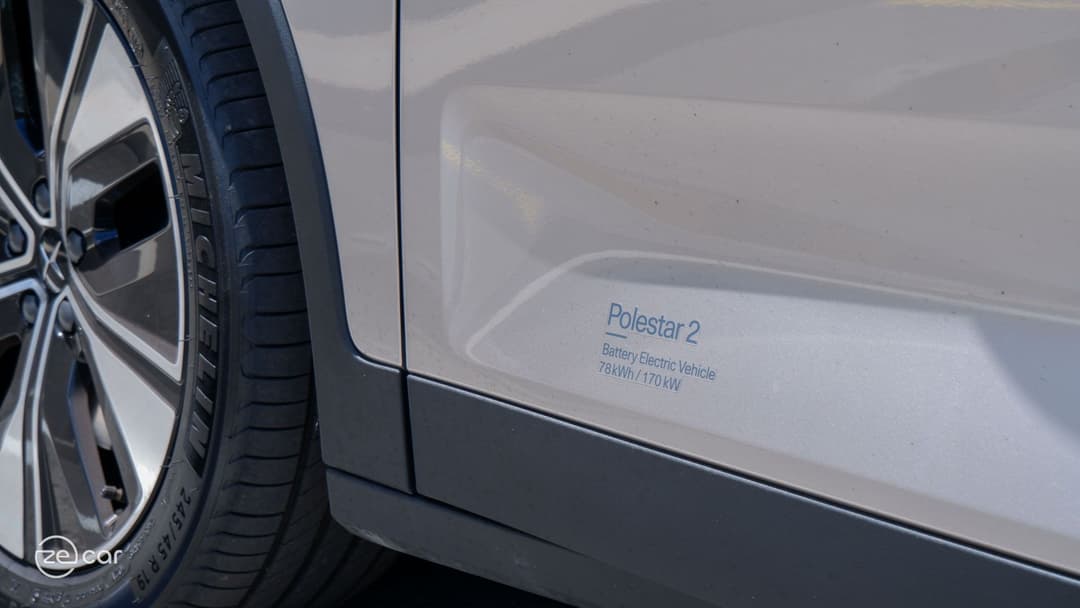

With the upcoming 2024 Polestar 2 facelift, the Long Range Single Motor gains a 4kWh larger battery, additional 85km claimed range, faster DC charging up to 205kW, and rear-wheel drive – so it might be worth the wait and we’re keen to test how much difference it makes in the real-world.
The liftback doesn’t offer vehicle-to-load nor vehicle-to-grid bidirectional charging capabilities, unlike the forthcoming Polestar 3 large luxury SUV.
Polestar 2 Driving
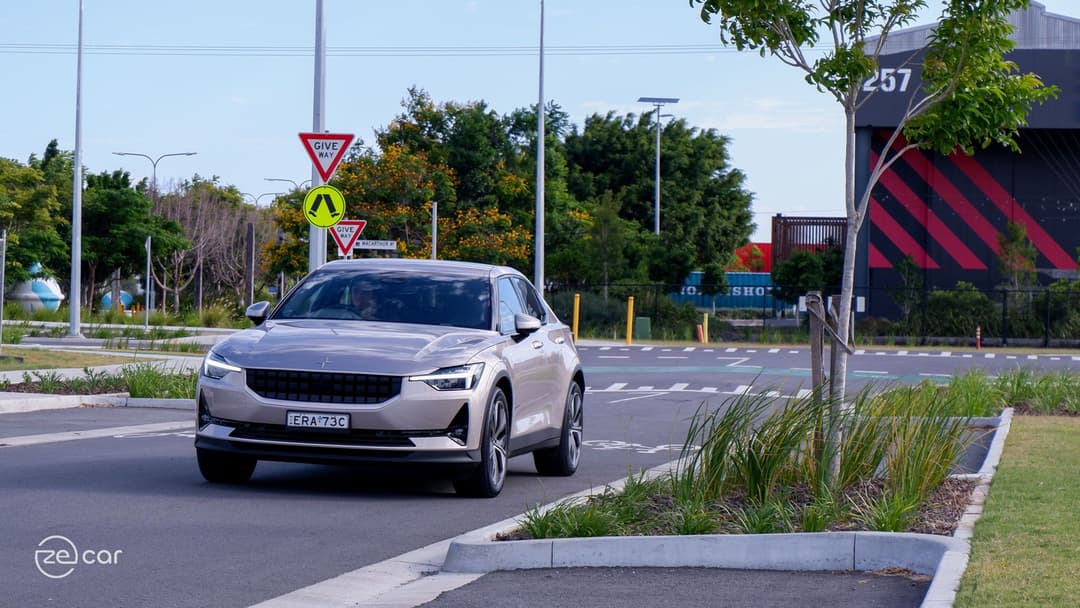
The Polestar 2 Long Range Single Motor is front-wheel-drive with an electric motor producing 170kW of power and 330Nm of torque, resulting in a claimed 0-100km/h acceleration time in 7.4 seconds.
The Chinese-made liftback is tuned to prioritise a sporty driving setup with a firm ride and sharp steering. But, single motor variants offer a very brisk and comfortable acceleration, even when pushed to the floor, that is at odds with its sporty interior and exterior design.
It seems the torque delivery is limited from a standstill to prevent wheel slip typically found on a front-wheel-driven electric car, which it successfully achieves, although it can still torque steer a little when first accelerating harder on a turn.
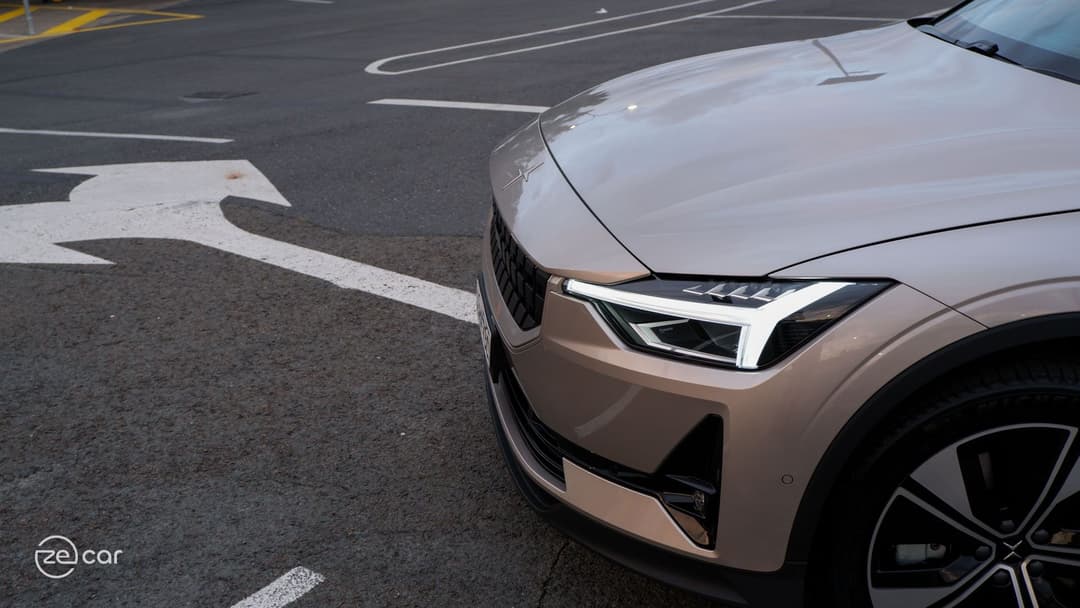
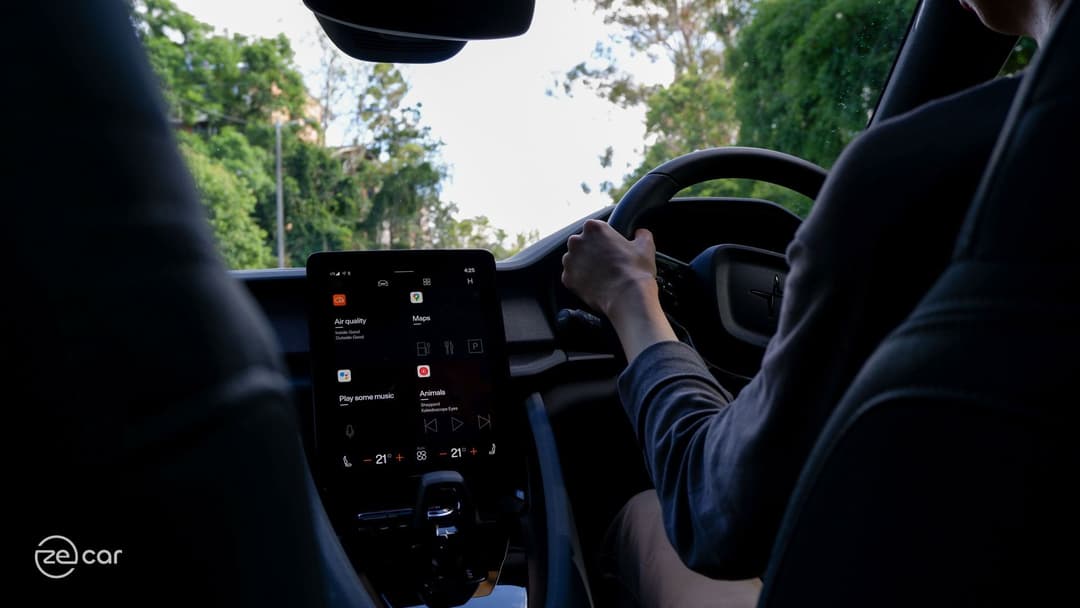
Regardless, there’s still enough power on tap being an electric car, but don’t expect to win any races even with some internal combustion engined cars on the road.
The drivetrain is more comfortable, but paradoxically has a sporty ride tune.
The Polestar 2’s sporty suspension setup results in undulations, bumps, and noticeable tyre and road noise sharply hitting into the cabin – even on these smallest standard 19-inch wheels.
Also worth noting is the lack of any sport or eco drive modes. Instead, there’s light, standard and firm steering settings, and an eco climate mode to extend EV range.
Like Tesla EVs, there’s no start/stop button; it only needs someone to sit in the driver's seat to turn on the vehicle. This can be a nuisance if you want to keep the air-con running while sitting at the back row and we wish there was a physical override, but it’s quite a seamless experience.
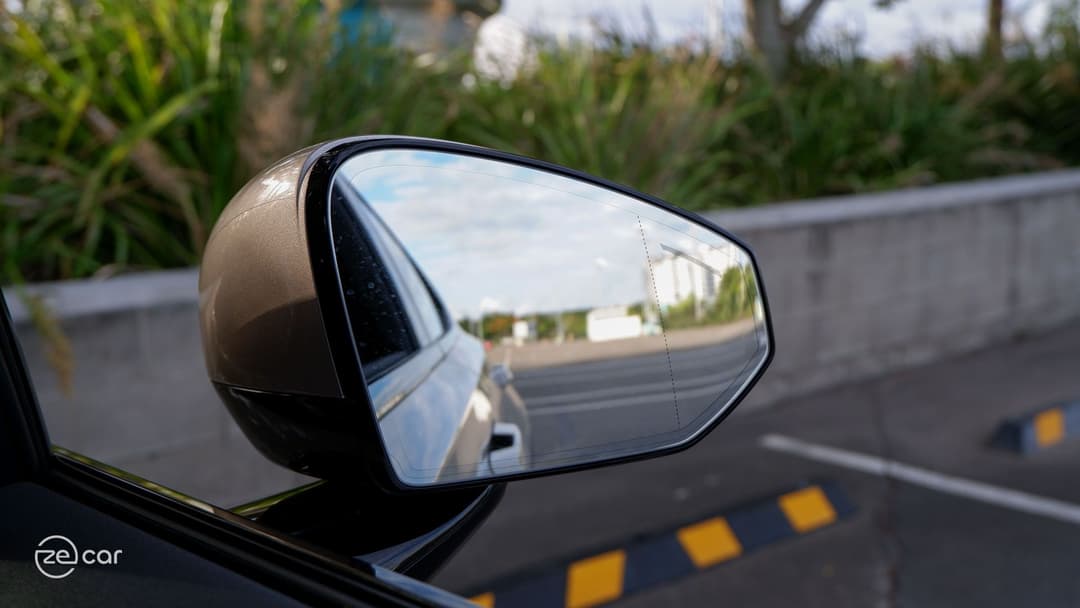

The closed-in cabin with sloping windows, smaller wing mirrors, raked rear liftback glass and large seat headrests constrict visibility. We’d suggest optioning the Pilot lite pack, which adds the 360-degree camera and front, rear and side parking sensors. The luxury EV is a good size to manoeuvre otherwise.
Most impressive is Polestar’s one-pedal regenerative braking setup.
Although there’s only three settings (off, low and standard) with a ‘creep’ mode, it’s a smooth one-pedal driving experience. The rear brake lights activate at just the right time and, importantly, actually keeps the brake light on while stopped.
It also doesn’t change to the default regen setting every time you change the drive direction or turn on the car. This is something the Hyundai Motor Group EV’s ‘i-Pedal’ can learn from.
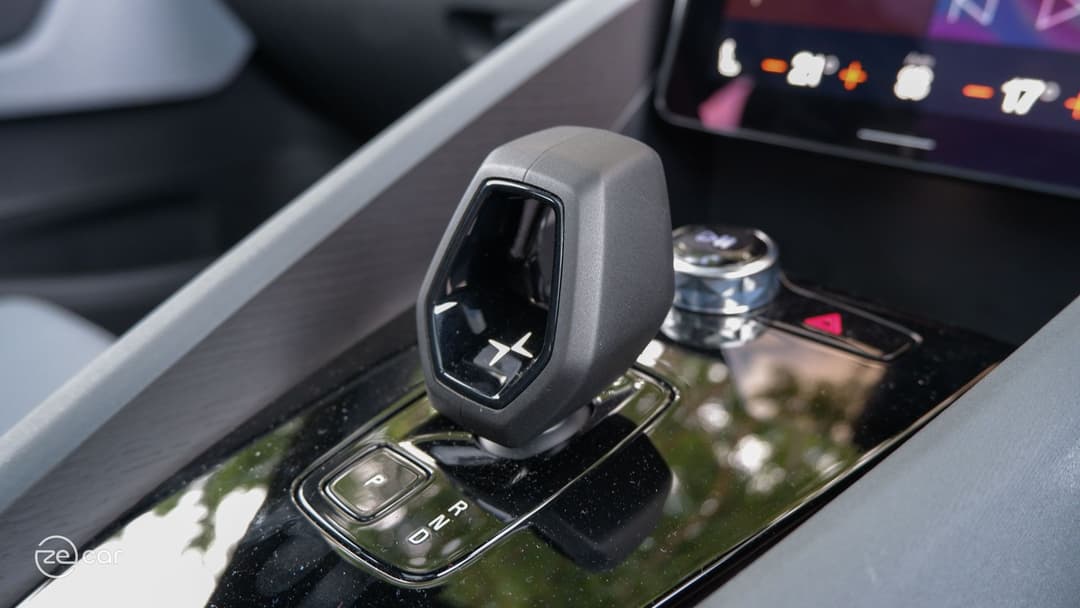
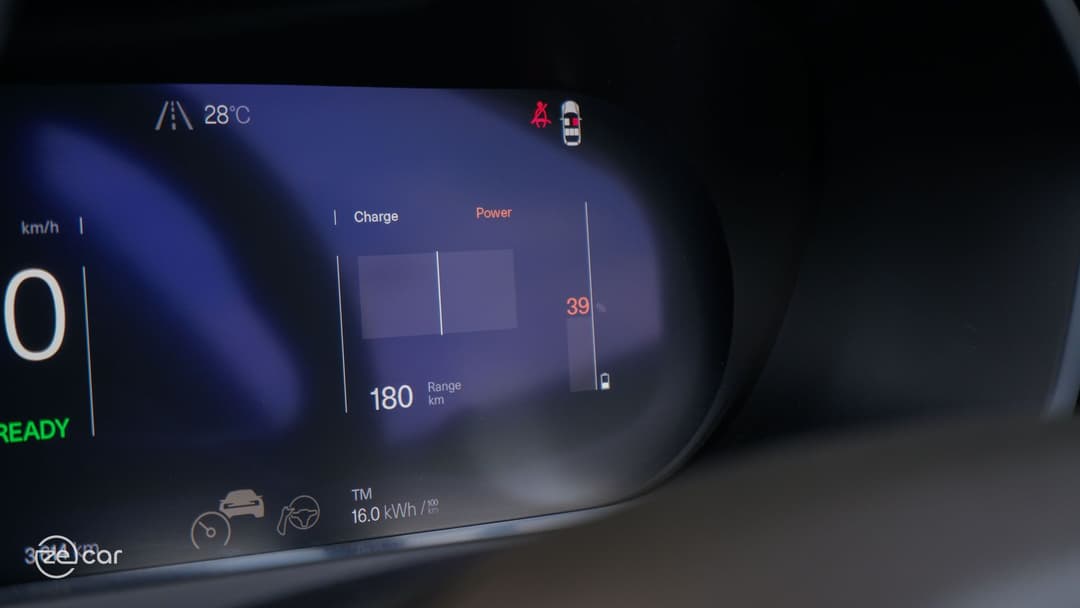
All Polestar 2s are backed by a five-year, unlimited kilometre vehicle warranty and an eight-year/160,000km battery warranty – promising it’ll retain at least 70 per cent of its battery capacity in that period, otherwise a replacement can be offered.
We commend its longer EV servicing intervals at every 24 months/30,000km and the first five-years/100,00km are even included for free.
2023 Polestar 2 Verdict
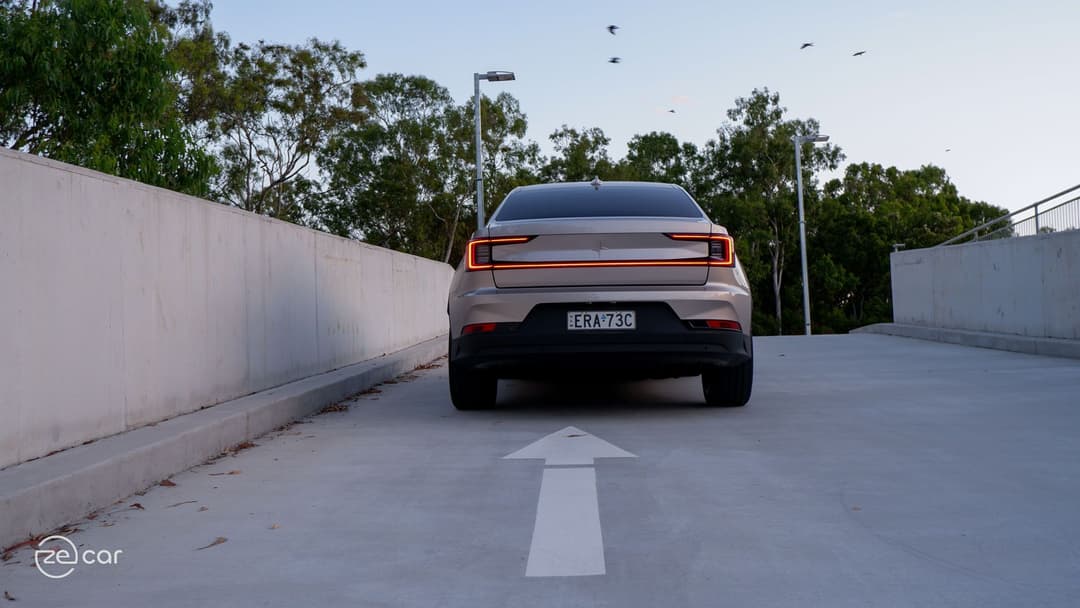
Overall Rating
7.3 out of 10
💰Value for money: 7
📱Tech and safety: 9
📏Size and practicality: 7
⏱️Driving and performance: 6
🔌Range and charging: 6
🛠️Warranty and running costs: 9
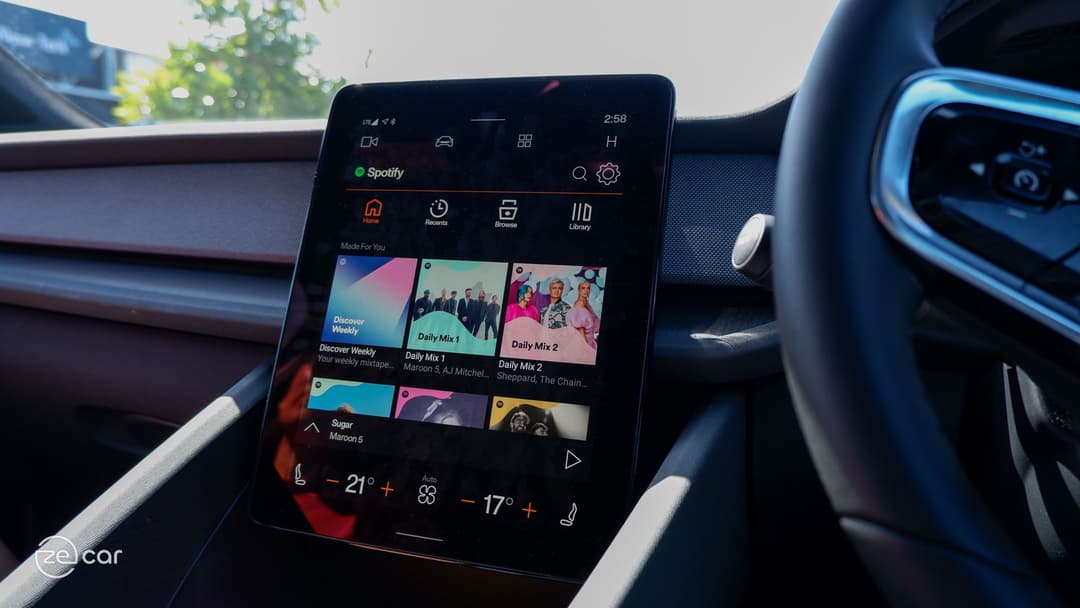
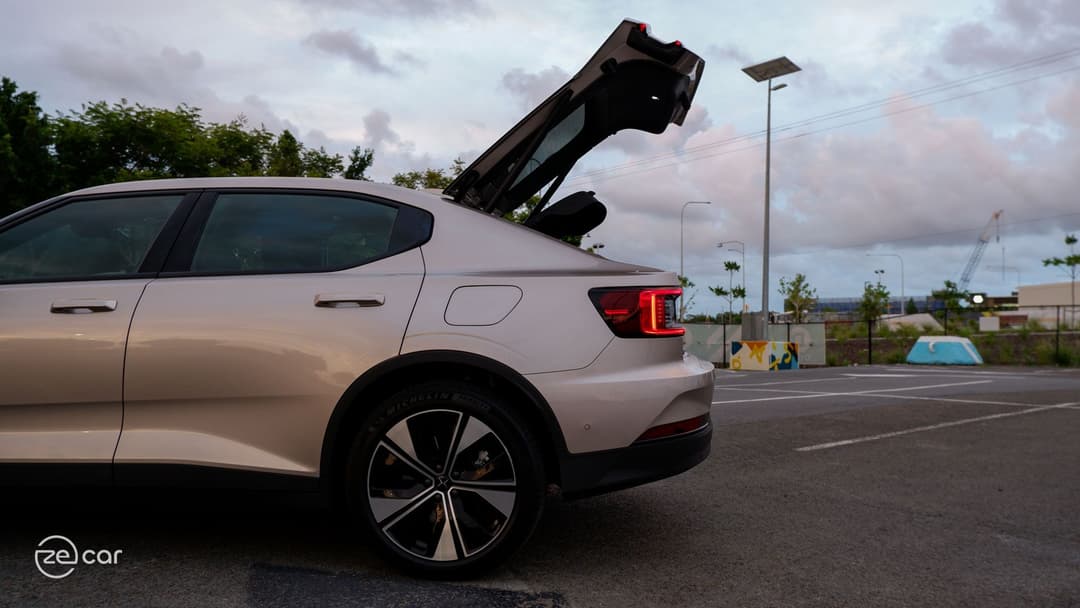
The Polestar 2 takes the best traits from the Tesla Model 3 into a more traditional and appetising package.
While the Model 3’s numbers still fare better on paper than the Polestar 2, the more appealing design, instrument display in front of the driver, and more accessible hands-free liftback boot opening warrant the extra spend – at least in my books.
It’s the closest rival to Tesla to date with great Android Automotive technology, impressive one-pedal driving system, and the cachet of a new EV-only brand that is more transparent about the sustainability of its battery and material supply chain than any other carmaker right now. But, it isn’t as practical, has sub-par charging times, and has a slightly harsher and noisier ride.
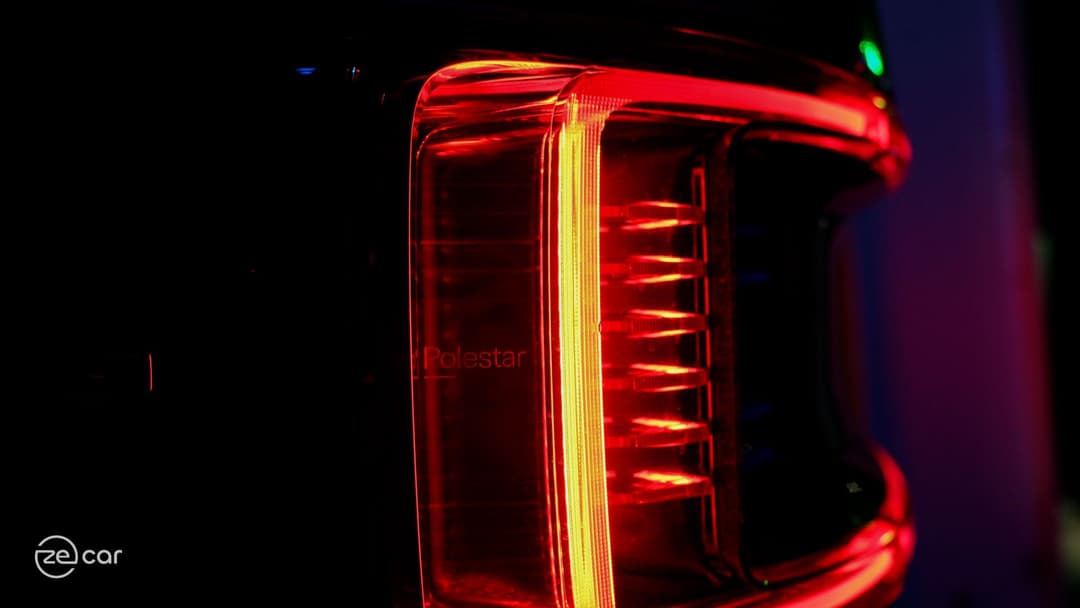
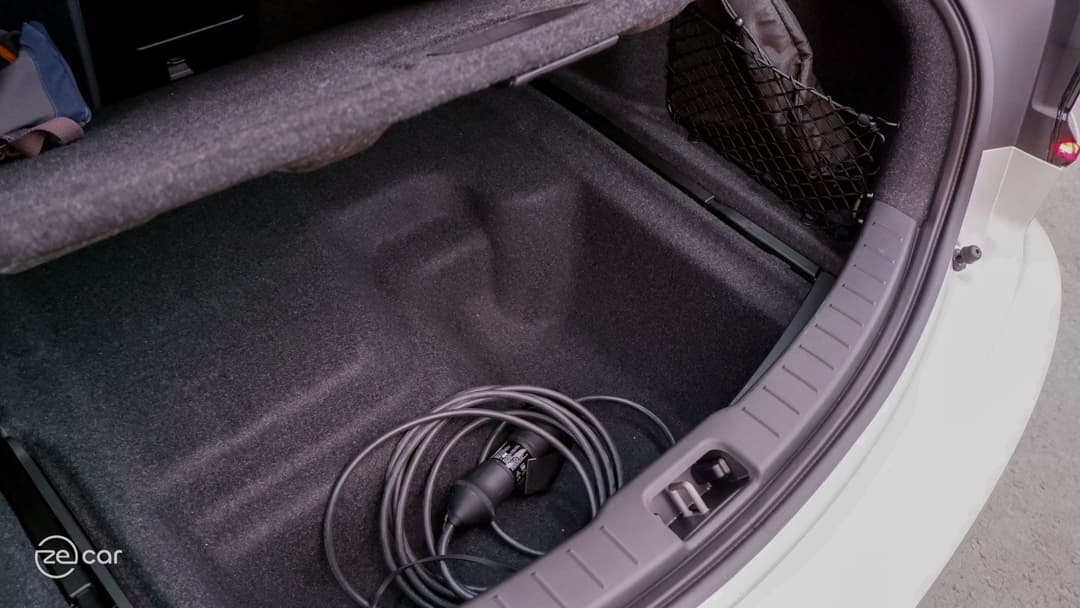
Critically, the lack of most active safety assistance technologies as standard is not befitting for any modern-day premium car brand. The Pilot lite pack should be included on all variants and the Plus Pack should be at least standard on long range models.
Granted, once both packs are fitted to the Polestar 2 Long Range Single Motor, it’s still under the luxury car tax threshold and eligible for the fringe benefits tax (FBT) exemption for company novated leases.
As for the related single-motor Volvo XC40 and C40 Recharge EVs – which include Polestar’s optional features as standard – are still similarly priced, and the Tesla Model 3 Long Range is just $900 cheaper.
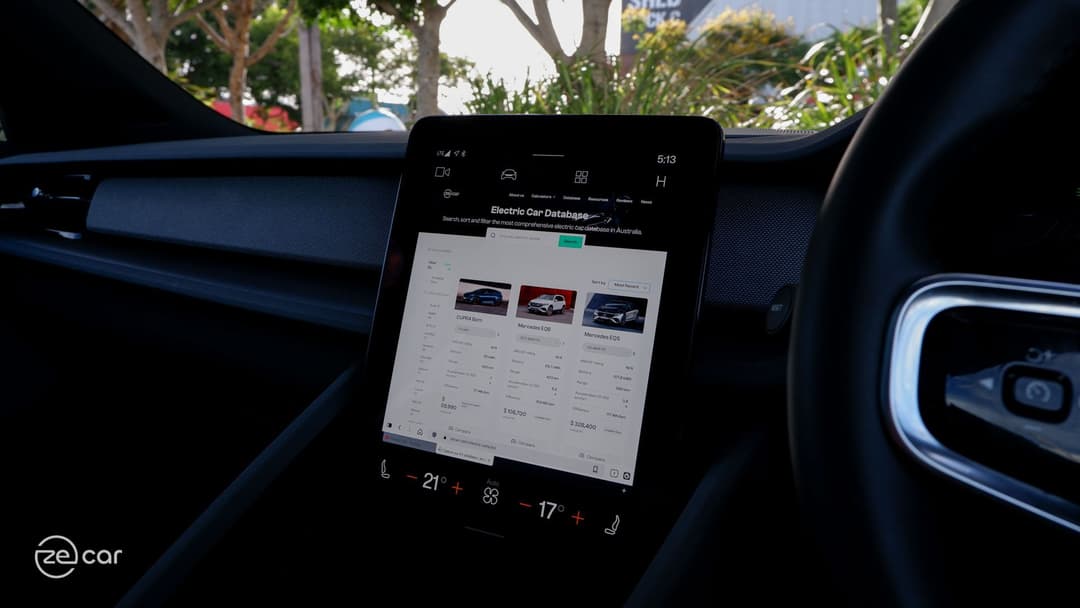
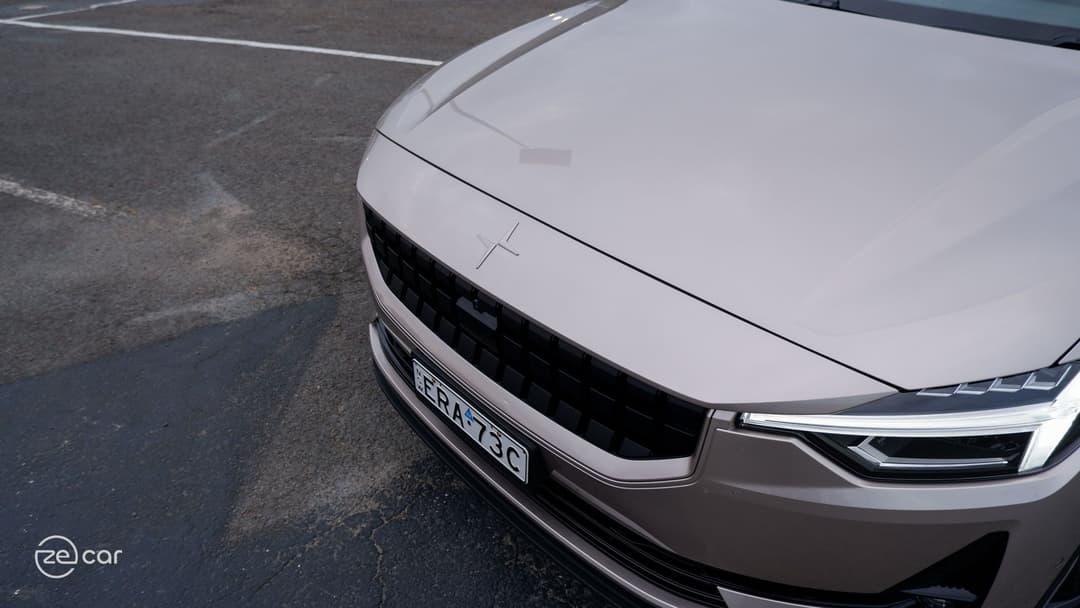
Fortunately, most of our concerns will be addressed in the forthcoming 2024 Polestar 2 update. If you can wait and are able to spend a bit more with a potential price increase, it’s worth holding out until orders open in the second quarter (April to June inclusive) of 2023.
But, if practicality is a priority, you’re better off looking at the Volvo XC40 Recharge and C40 Recharge electric SUVs instead at the expense of higher energy consumption – both of which are also due for a similar major update later this year.
Nonetheless, the Polestar 2 is another good choice in the growing Australian EV market. Just remember to tick some option boxes…
Polestar 2 FAQs
Datawrappers by Danny Thai
Photographs by Henry Man
About the author
Stay up to date with the latest EV news
- Get the latest news and update
- New EV model releases
- Get money savings-deal




